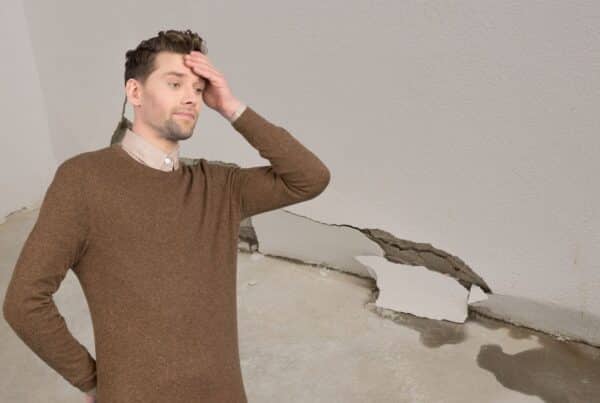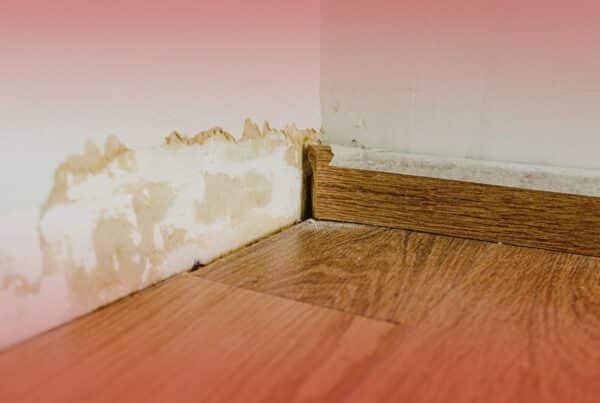A finished basement can be a big win. More living space, a boost for resale value, and a cozy place for movie nights or guests. But if it’s not designed with moisture in mind, all that value can disappear with one leak. Many homeowners walk into a basement with a beautiful design and assume everything is in great shape. But looks can be deceiving. The way a basement is built or remodeled plays a huge role in how well it handles water.
And in Ohio, where wet seasons are no joke, that matters more than ever. Let’s break down the most common basement design elements that can make or break your waterproofing efforts.
Basements and Water Issues
Basements are naturally more prone to moisture. They sit below ground level, surrounded by soil that expands and contracts with rain, snow, and temperature shifts. If the design of your basement ignores that reality, problems start piling up fast.
According to the American Society of Home Inspectors, roughly 60% of U.S. homes have some kind of water issue in the basement or crawl space. That could be anything from high humidity to standing water after a storm.

If your basement is finished, water damage can cost anywhere from $1,200 to more than $10,000 depending on how early it’s caught and how much needs to be repaired. So whether you’re buying a home or remodeling, it’s worth knowing what to watch for.
Flooring Matters
Flooring might seem like a style choice, but in the basement, it’s a moisture decision too.
Carpet, hardwood, and some types of laminate can absorb even small amounts of moisture. Over time, that leads to mold, mildew, or warped boards. Worse, many homeowners don’t realize there’s a problem until it smells musty or feels soft underfoot.
If you’re house hunting:
Look for signs like carpet that smells stale, laminate with curled edges, or flooring that feels uneven or “spongy” in spots. Ask what’s underneath the floor…was a vapor barrier installed?
If you’re remodeling:
The best waterproof flooring choices include:
- Luxury vinyl plank (LVP) with a waterproof core
- Sealed concrete, which can be stained or painted for a clean look
- Ceramic or porcelain tile with proper subflooring
Avoid carpet unless you’re adding a waterproof subfloor system. And never install real wood in a basement. It’s a recipe for regret.
Wall Finishes
Finished basement walls can hide a lot. Unfortunately, that includes hidden moisture and mold growth.
Many builders still use standard drywall over wooden framing for basement walls. The problem is, neither of those materials handles water well. All it takes is a small leak or slow seepage to cause major damage behind the scenes.
Red flags to look for:
- Baseboards pulling away from the wall
- Peeling paint or bubbling drywall
- A slightly damp or earthy smell near the lower walls
Better options for finishing basement walls:
- Moisture-resistant drywall (often called green board)
- Insulated wall systems made specifically for below-grade spaces
- Rigid foam panels with a vapor barrier before finishing layers
Even in a home that looks finished and modern, these behind-the-wall details make a difference. Ask questions during walk-throughs or inspections, and if you’re remodeling, insist on moisture-smart materials.
Ceilings: Access vs. Aesthetics
Most people want their basement ceiling to look clean and finished. But a sleek drywall ceiling might hide future problems.
If a pipe bursts or a bathroom leak starts upstairs, you want to know about it, fast. That’s hard to do if everything’s sealed up tight. Repairs get messy, and leaks often go unnoticed until damage spreads.
Things to check:
- Look for ceiling tiles that are sagging or stained
- Ask if there’s access to plumbing shutoffs and HVAC components
- Watch out for drywall ceilings in basements with bathrooms or laundry above
Smarter ceiling choices:
- Drop ceilings (modern ones don’t look as dated as you’d think)
- Exposed beams painted or finished for a rustic-industrial look
- Removable panels that allow easy access to plumbing or ductwork
Function matters here. The right ceiling can save you thousands in repairs, and give you peace of mind if anything goes wrong.
Layout and Drainage
The way a basement is laid out affects more than just how it looks. A poor layout can mean poor drainage, which will make small water issues worse or harder to fix.
Common layout mistakes:
- Blocking off access to the sump pump or main water shutoff
- Placing furniture or flooring in areas without proper drainage
- No floor drain near the laundry area or utility sink
What to do instead:
- Keep utility access points clear and easy to reach
- Ensure flooring slopes slightly toward a drain or away from foundation walls
- Designate a spot for the dehumidifier with proper airflow
If you’re buying a home, walk through the space with these things in mind. If you’re remodeling, make function a priority in the design, not just square footage.
Windows and Egress
Basement windows are great for natural light and meeting egress codes. But they’re also one of the most common sources of leaks.
If a window well isn’t properly drained or if the grading around the home slopes inward, water collects fast. That water can seep into the foundation or flow directly through the window during a storm.
Look for these issues:
- Rust stains inside the window well
- Watermarks or peeling paint below windows
- Cracks in the caulking or frame
Protective upgrades include:
- Clear plastic window well covers
- Drainage rock at the bottom of the well
- Regrading the soil outside the home to direct water away from windows
Even new-looking windows can leak if installed incorrectly. Don’t assume clean equals waterproof.
Other Recommended Maintenance
Design is a great start, but regular upkeep keeps your basement dry long term. Add these to your seasonal checklist:
- Seal small cracks in the foundation before they grow
- Clean your gutters and extend downspouts 4–6 feet from the home
- Test your sump pump every spring and fall
- Use a dehumidifier and aim to keep humidity below 60%
- Install a battery backup for the sump pump if you don’t have one
When to Call a Professional
If something feels off, trust your instincts. You should reach out for help if:
- You smell a musty odor that won’t go away
- You see water stains, warped trim, or soft spots in the flooring
- The basement feels damp year-round, even with a dehumidifier running
- There’s mold on walls, windows, or storage boxes
A waterproofing inspection from a trained professional can identify the real source of the issue and help you fix it before it spreads. Whether you’re buying, remodeling, or just unsure what’s going on, expert advice can save you money and stress.
Conclusion
It’s easy to get excited about flooring choices or lighting plans, but if your basement isn’t designed to stay dry, none of that matters for long.
Good basement design supports good waterproofing. Whether you’re moving in, finishing a space, or trying to fix a frustrating moisture issue, knowing what to look for helps you make smarter decisions.
Need a second opinion or want to make sure your basement is moisture-ready?
Buckeye Basement Solutions can help you assess, protect, and improve your space for the long haul, with real answers, not just patch jobs.



